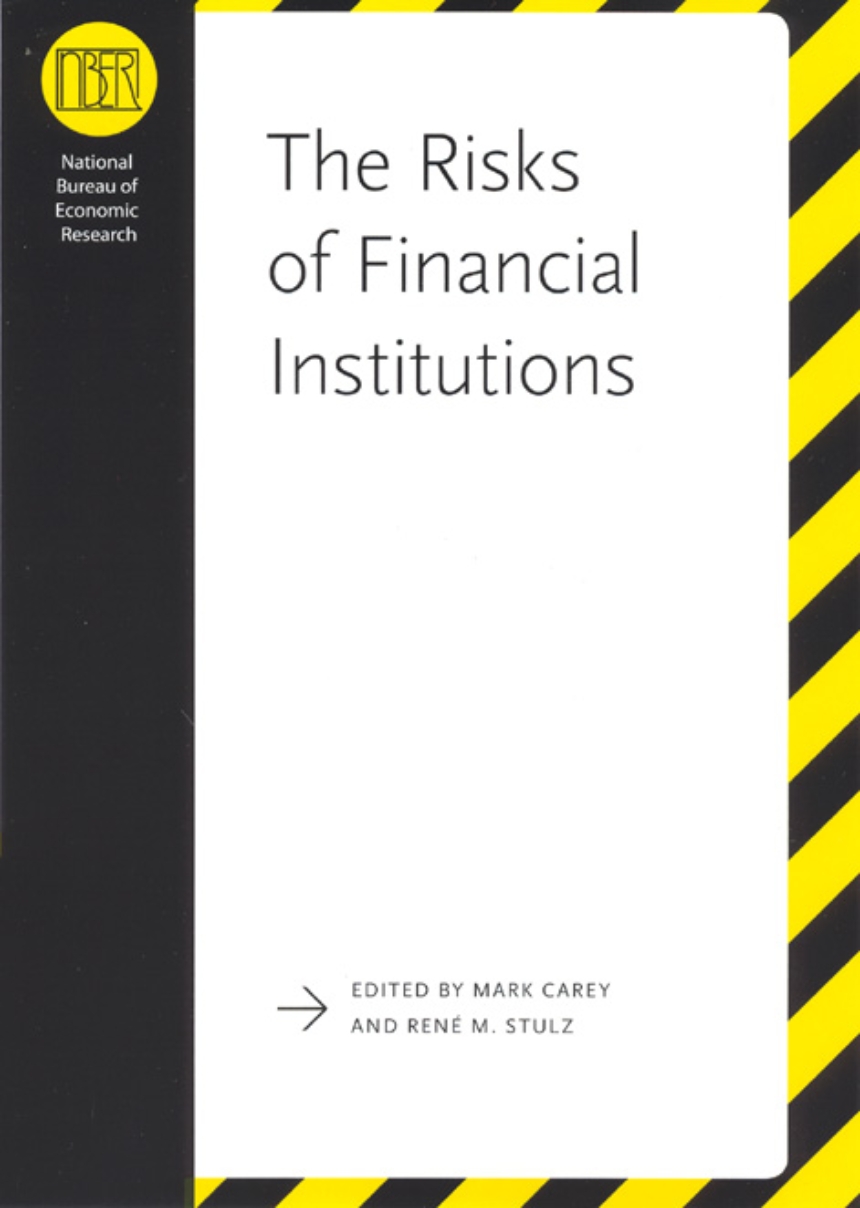The Risks of Financial Institutions
Until about twenty years ago, the consensus view on the cause of financial-system distress was fairly simple: a run on one bank could easily turn to a panic involving runs on all banks, destroying some and disrupting the financial system. Since then, however, a series of events—such as emerging-market debt crises, bond-market meltdowns, and the Long-Term Capital Management episode—has forced a rethinking of the risks facing financial institutions and the tools available to measure and manage these risks.
The Risks of Financial Institutions examines the various risks affecting financial institutions and explores a variety of methods to help institutions and regulators more accurately measure and forecast risk. The contributors--from academic institutions, regulatory organizations, and banking--bring a wide range of perspectives and experience to the issue. The result is a volume that points a way forward to greater financial stability and better risk management of financial institutions.
520 pages | 66 line drawings, 112 tables | 6 x 9 | © 2007
National Bureau of Economic Research Conference Report
Economics and Business: Economics--Government Finance, Economics--International and Comparative, Economics--Money and Banking
Table of Contents
Introduction
Mark Carey and René M. Stulz
I. MARKET RISK, RISK MODELING, AND FINANCIAL SYSTEM STABILITY
1. Bank Trading Risk and Systemic Risk
Philippe Jorion
2. Estimating Bank Trading Risk: A Factor Model Approach
James O’Brien and Jeremy Berkowitz
Comments on Chapters 1 and 2:
Kenneth C. Abbott
Paul Kupiec
Discussion Summary
II. SYSTEMIC RISK
3. How Do Banks Manage Liquidity Risk? Evidence from the Equity and Deposit Markets in the Fall of 1998
Evan Gatev, Til Schuermann, and Philip E. Strahan
Comment: Mark Carey
Discussion Summary
4. Banking System Stability: A Cross-Atlantic Perspective
Philipp Hartmann, Stefan Straetmans, and Casper G. de Vries
Comment: Anthony Saunders
Discussion Summary
5. Bank Concentration and Fragility: Impact and Mechanics
Thorsten Beck, Asli Demirgüç-Kunt, and Ross Levine
Comment: René M. Stulz
Discussion Summary
6. Systemic Risk and Hedge Funds
Nicholas Chan, Mila Getmansky, Shane M. Haas, and Andrew W. Lo
Comment: David M. Modest
Discussion Summary
III. REGULATION
7. Systemic Risk and Regulation
Franklin Allen and Douglas Gale
Comment: Charles W. Calomiris
Discusion Summary
8. Pillar 1 versus Pillar 2 under Risk Management
Loriana Pelizzon and Stephen Schaefer
Comment: Marc Saidenberg
Discussion Summary
IV. NEW FRONTIERS IN RISK MANAGEMENT
9. Global Business Cycles and Credit Risk
M. Hashem Pesaran, Til Schuermann, and Björn-Jakob Treutler
Comment: Richard Cantor
Discussion Summary
10. Implications of Alternative Operational Risk Modeling Techniques
Patrick de Fontnouvelle, Eric S. Rosengren, and John S. Jordan
Comment: Andrew Kuritzkes
Discussion Summary
11. Practical Volatility and Correlation Modeling for Financial Market Risk Management
Torben G. Andersen, Tim Bollerslev, Peter F. Christofferson, and Francis X. Diebold
Comment: Pedro Santa-Clara
Discussion Summary
12. Special Purpose Vehicles and Securitization
Gary B. Gorton and Nicholas S. Souleles
Comment: Peter Tufano
Discussion Summary
13. Default Risk Sharing between Banks and Markets: The Contribution of Collateralized Debt Obligations
Günter Franke and Jan Krahnen
Comment: Patricia Jackson
Discussion Summary
Biographies
Contributors
Author Index
Subject Index
